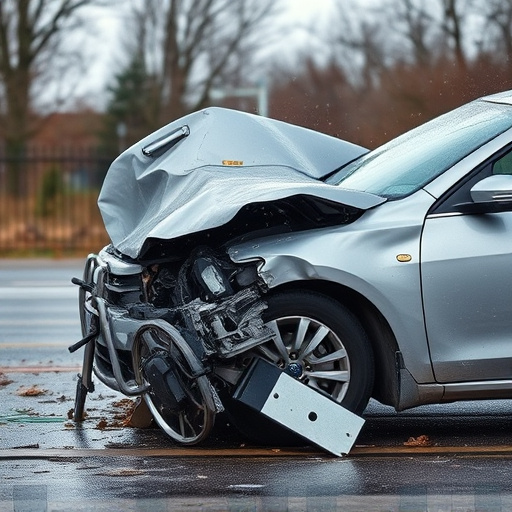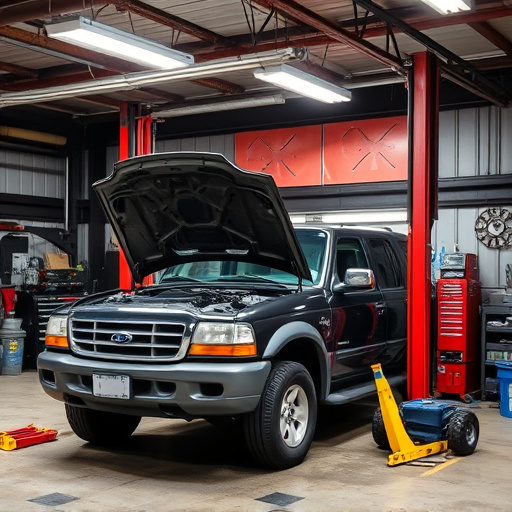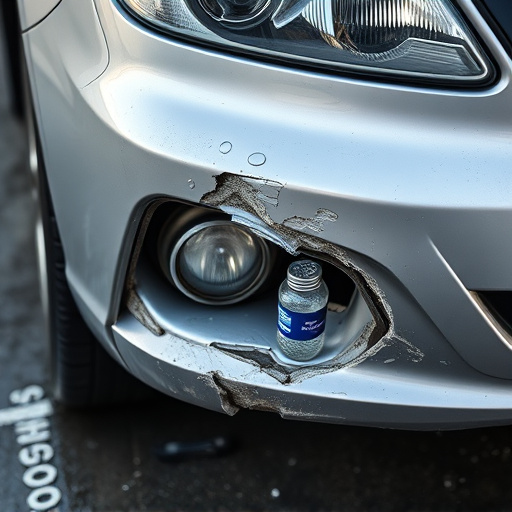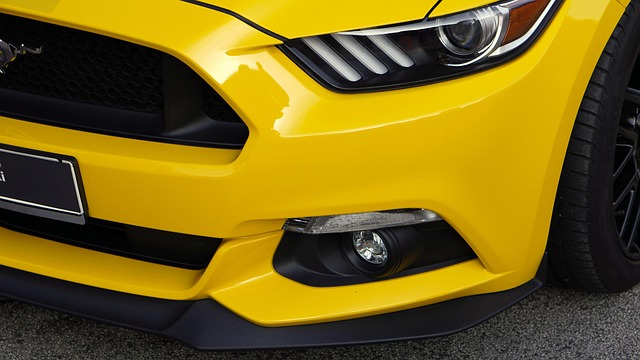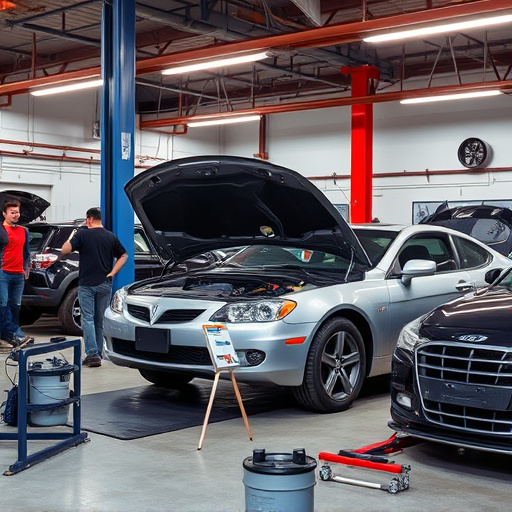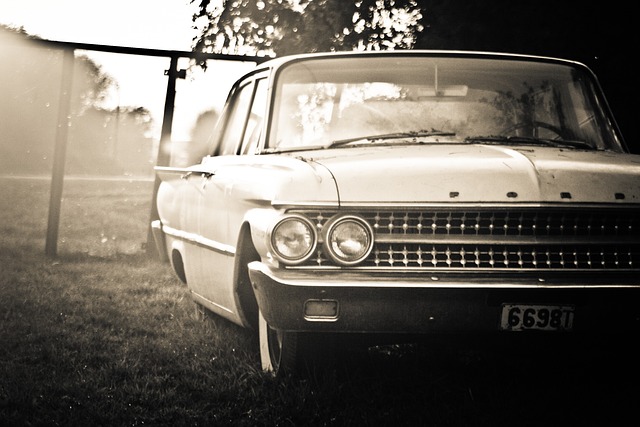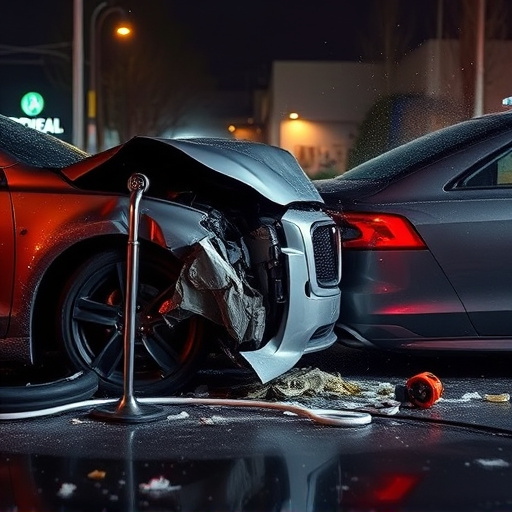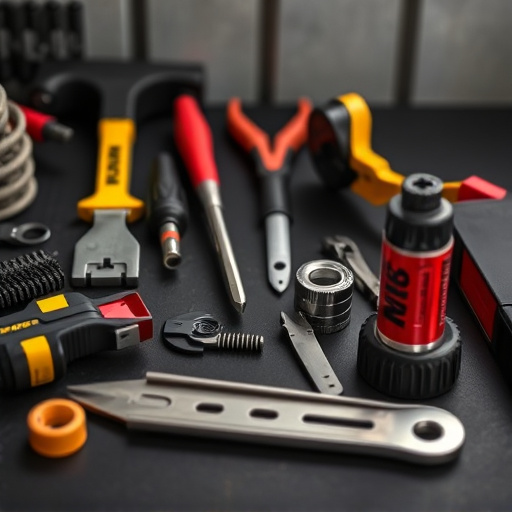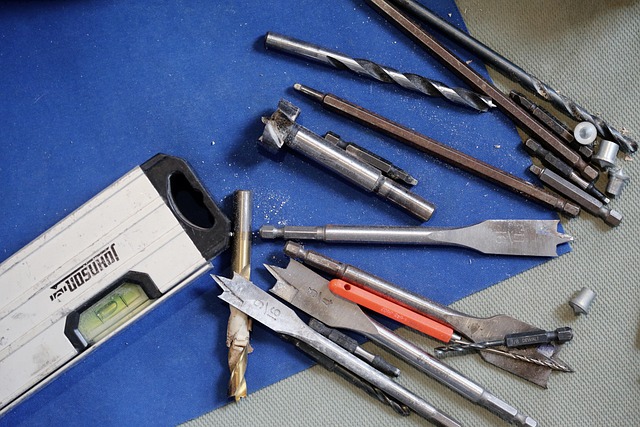Mercedes headlamp assist calibration optimizes vehicle lighting performance using advanced sensors and cameras to detect road surface features. Regular calibration ensures accurate lighting recognition, enhancing night-time visibility and safety, especially post collision repair. This critical component of ADAS reduces accident risks by interpreting road markings in real time, promoting safer driving conditions.
Mercedes’ Headlamp Assist system enhances night driving safety by recognizing road surface features using advanced lighting technology. This innovative feature ensures optimal illumination, improving visibility and driver confidence. The article delves into how the calibration process plays a pivotal role in enhancing light detection accuracy. By understanding this intricate mechanism, we highlight the system’s impact on improved safety standards for Mercedes vehicles, ensuring drivers navigate dark roads with precision and peace of mind.
- Mercedes Headlamp Assist: Recognizing Road Surface Features
- Calibration Process: Enhancing Light Detection Accuracy
- Improved Safety: The Impact of Accurate Lighting Recognition
Mercedes Headlamp Assist: Recognizing Road Surface Features
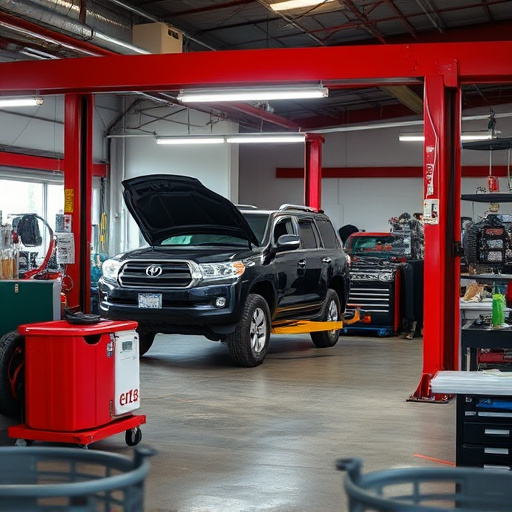
Mercedes Headlamp Assist is a cutting-edge technology designed to enhance driver safety and visibility. This system utilizes advanced sensors and cameras to recognize various road surface features, such as grooves, ridges, and markings. By calibrating the Mercedes headlamp assist, the car’s software learns to interpret these features accurately, allowing for precise lighting adjustments. This ensures that drivers receive optimal illumination while driving, making it easier to navigate turns, detect hazards, and maintain control of the vehicle.
The calibration process involves a detailed scan of the road surface by the vehicle’s sensors, which creates a comprehensive map of the area. This data is then cross-referenced with pre-programmed information to fine-tune the headlamps’ performance. Regular Mercedes headlamp assist calibration is crucial for maintaining peak performance, especially after visits to a car body shop or collision repair shop, ensuring that your vehicle’s lighting system continues to provide the highest level of safety on the road.
Calibration Process: Enhancing Light Detection Accuracy
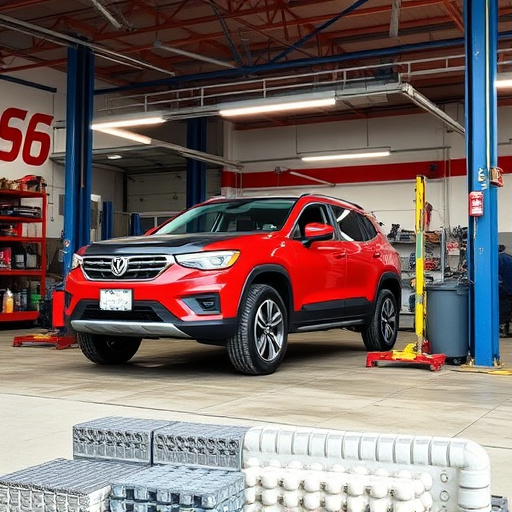
The Mercedes Headlamp Assist Calibration process is designed to fine-tune and optimize the performance of a vehicle’s headlamps, ensuring they provide the best possible illumination for safe driving. This intricate procedure involves advanced technology and meticulous techniques to enhance the accuracy of light detection. During calibration, specialized tools are used to adjust various settings within the car’s lighting system, allowing it to adapt to different road conditions and environments. By calibrating the headlamps, the system can more precisely determine the distance and intensity of nearby objects, including road surfaces, ensuring optimal visibility for drivers.
This meticulous process is crucial in improving the overall effectiveness of Mercedes’ innovative Headlamp Assist feature, which has become an integral part of modern vehicle safety. With enhanced light detection accuracy, drivers can expect improved night-time visibility, making their journeys safer and more secure. It also reduces the risk of accidents caused by inadequate lighting, especially during poor weather conditions or in low-light scenarios, where a car’s headlamps play a vital role in illuminating the road ahead. Regular calibration ensures that these advanced lighting systems perform optimally, contributing to a smoother and safer driving experience, just like a well-restored classic car with pristine auto glass and a flawless bumper.
Improved Safety: The Impact of Accurate Lighting Recognition
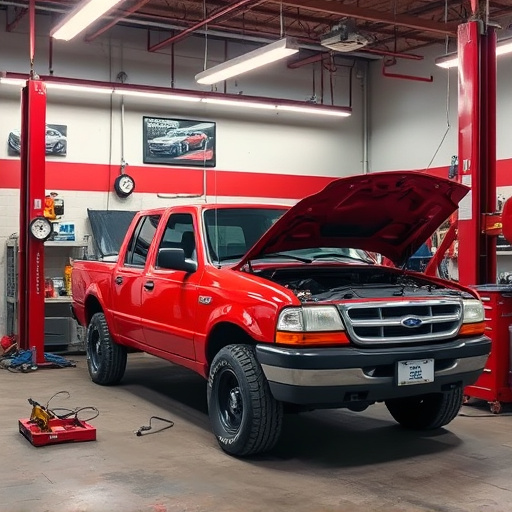
Mercedes headlamp assist calibration plays a pivotal role in enhancing road safety by ensuring accurate lighting recognition. Modern vehicles like Mercedes are equipped with advanced driver-assistance systems (ADAS) that rely on precise lighting data to function optimally. Accurate lighting recognition allows these systems to detect and interpret road surface markings, signage, and other visual cues, enabling the vehicle to make informed decisions in real time.
This technology significantly reduces the risk of accidents by providing drivers with clearer information about their surroundings. For instance, proper headlamp assist calibration ensures that headlights automatically adjust to match the curve of a road, illuminating areas that might otherwise be obscured. This improved visibility not only aids in preventing collisions but also allows for smoother and safer driving, particularly during adverse weather conditions or at night. Auto body repair shops and car repair services can contribute to this safety enhancement by ensuring proper maintenance and calibration of these systems as part of their routine servicing.
The Mercedes Headlamp Assist system, through precise calibration, significantly enhances road surface light recognition. By fine-tuning its lighting detection capabilities, this feature contributes to improved safety by ensuring optimal illumination during various driving conditions. Regular calibration of the Mercedes Headlamp Assist ensures accurate identification of road markings and defects, allowing drivers to navigate with enhanced confidence and peace of mind.
